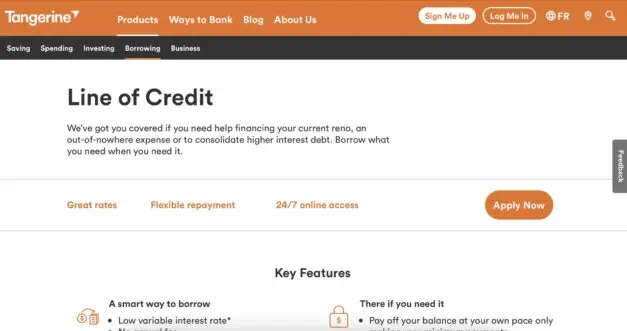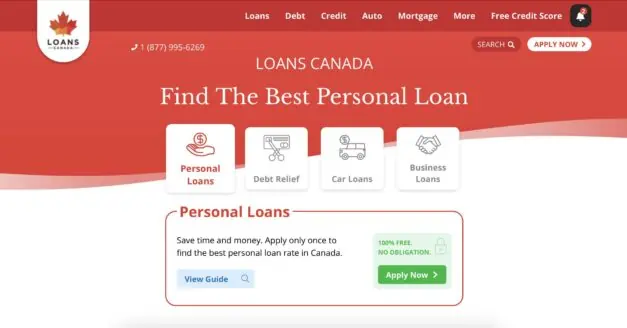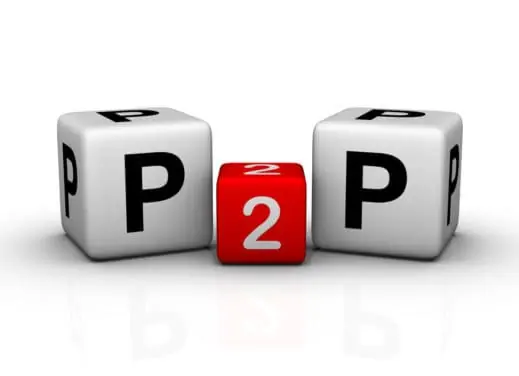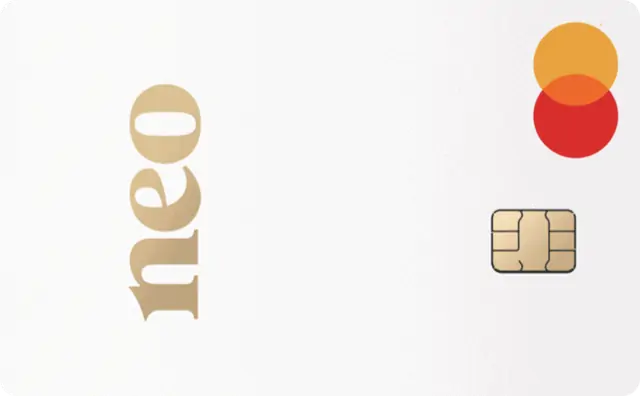If you are considering taking out a loan, you may be interested in a line of credit instead.
These differ from personal loans, where you receive a lump sum and pay it back monthly. Instead, they are more like credit cards, where you get access to revolving credit that you can access when you need it.
This guide provides you with all the information you need to know about lines of credit, including how they work, the pros and cons, and the best places to apply for one in Canada.
Line of Credit Explained
A line of credit is a form of open-ended loan where instead of receiving this in a lump sum, you can access the funds as you wish. For example, you could get a credit limit of $10,000 but only borrow $500 to pay for something.
You can borrow up to your limit at any time and for any purpose, and you only pay interest on the amount you borrow.
How a Line of Credit Works
You will be given a credit limit when you are approved for a line of credit. This is the maximum amount of money you can borrow, but you don’t have to borrow all of it. Also, there is no restriction on what you use the funds for.
You can usually access the funds when you want by transferring money to your chequing account, spending on your debit card, withdrawing cash from an ATM or even using a cheque.
There is no need to keep applying for a new loan whenever you want to borrow money. As long as you are borrowing within your limit, the funds are there to use when you want them.
You must make a regular payment on anything you borrow, which is often quite flexible. For example, you may only need to repay the interest.
One thing to remember is that you don’t get a grace period as you do with a credit card. With a line of credit, you start paying interest from the first day you borrow the money.
Some lines of credit are secured, while some are unsecured. Secured lines of credit are secured using an asset as collateral, usually a property. These include home equity lines of credit. As a result, unsecured line of credit rates in Canada is often lower.
Unsecured assets include personal lines of credit and student lines of credit.
The Average Line of Credit Interest Rate in Canada
Most banks that offer lines of credit offer variable interest rates based on their prime rates. When the prime rate goes up, the interest rates increase.
The interest rates tend to be lower than with credit cards. If you are looking for the best rate for a line of credit in Canada, secured lines of credit are typically around 5-6%, while unsecured lines of credit are 9-10% on average.
The rates are also determined by other factors, including your credit score and history and the amount you borrow.
Line of Credit vs Loans
With a loan, you typically borrow a fixed amount of money and agree to pay it back in monthly installments over the loan term.
You pay interest on the full loan amount until you pay it off. Then you must apply for another loan to borrow more money.
With a line of credit, you are given a set credit limit, but you only borrow what you want up to the maximum. The amount you pay back each month also varies depending on how much you borrow.
Best Line of Credit Interest Rates from the Big Banks
Here are some of the best lines of credit you can apply for in Canada from the big banks:
1. Tangerine

The Tangerine line of credit has a variable interest rate and no annual fee. You can apply online in minutes and get access to funds online.
You can then pay off the amount you borrow at your own pace as long as you make the minimum payments.
2. Scotiabank

There is no annual fee for the Scotiabank line of credit, and you can borrow from $5,000 up to $75,000.
It comes with flexible repayments, and you can access funds via online banking, mobile app, and more.
The variable interest rate is based on Scotiabank’s Prime Rate. You will need a form of ID, proof of employment or self-employment documents to apply.
3. BMO

If you take out a BMO line of credit, your repayments must be equal to 2% of the outstanding balance or $50, whichever is greater. There is also an option to make interest-only payments.
The interest rate is based on the prime rate and depends on the amount you borrow, your credit history and whether it is a secured or unsecured loan.
You cannot apply online and must book an appointment at a BMO branch, where you will need to provide ID and proof of employment.
4. TD

You can borrow from $5,000 up to $50,000 with a TD line of credit. You can access the funds via your TD Access Card online, via the app or at ATMs.
There are several options, including personal, student and investment-secured lines of credit. You can choose from a variable rate based on the TD Prime Rate or a fixed rate.
5. RBC

The Royal Credit Line at RBC has no annual fee, and you can access your funds anytime.
You can also easily decrease your limit if you want, and you can get credit alerts when your available credit goes below $100 or a level you set.
Secured and unsecured lines of credit are available. With secured lines of credit, you can borrow up to 65% of your home’s value. To apply, you must call or apply in person at an RBC branch.
Related: Best bad credit personal loans.
6. CIBC

You can get both secured and unsecured lines of credit at CIBC. For unsecured lines of credit, you can borrow from $5,000. For secured lines of credit, you can borrow from $10,000.
You will enjoy 24-hour access to funds, and you can pay off all or some of the balance when you make your payments.
To open a line of credit, you can call, visit a branch or apply online. A minimum income requirement of $20,000 is required for the unsecured option.
Best Personal Lines of Credit
If you don’t want to apply with one of the big banks in Canada, you can apply for a personal loan instead. Here are some of the best options:
7. Loans Canada

Loans Canada provides personal loans, car loans, business loans and debt relief to lower your monthly payments.
You can submit an application and receive personalized offers right away. You can also apply for a bad credit loan here.
Interest rates on Loans Canada range between 2.99% and 46.96%. You can use the loan calculator on the website to determine how expensive your loan will be.
8. LoanConnect

LoanConnect is a search portal where you can look for personal loans. You can borrow up to $50,000 and get pre-approved in minutes, and terms last from six to 60 months.
You can find a loan here even if you have bad credit, but the interest rates will be higher. The interest rates start at 6.99% APR and go up to 46.96%.
Most lenders provide instant approval credit, and your funds could be deposited in just 12 hours.
Related: LoanConnect review.
9. Loanz

You can apply for loans from $1,000 to $15,000 at Loanz and get approved in minutes. You can then receive funds in as little as 15 minutes.
It has a simple application process; you just set how much you want to borrow and then get instant approval.
Loanz reports all payments to credit agencies to improve your credit rating. To apply, you must have a steady source of income and not be in bankruptcy or collections.
Pros and Cons of a Line of Credit
Pros:
- Only pay interest on what you borrow instead of the whole amount.
- They usually have a lower interest rate compared to credit cards and personal loans.
- Enjoy greater flexibility in paying back what you borrow.
- More convenient than applying for new loans.
- Freedom to use your line of credit for any purpose.
Cons:
- Variable interest rates mean your interest payments may increase.
- No set timetable for repayments means you must be disciplined.
- No grace period like you get with a credit card.
- Can put your home at risk with a secured line of credit.
- It can be tempting to overspend with easy access to funds.
Should You Get a Line of Credit?
A line of credit can be a good option if you want to have a fund you can dip into when you need it.
It can be a useful and hassle-free way to get access to funds. Once you have set it up, the money is there when you need it. Remember that you will normally need a good credit score to apply for one.
If you want a line of credit, look around and compare interest rates to find the best option for your requirements.
Related: Almost instant easy online loans.
FAQs
You will usually need to have a good credit score to apply for a line of credit in Canada. This means a credit score of 660 or above.
The interest rate for the Scotiabank line of credit is a variable rate that is based on the Prime Rate. It will also be affected by your credit history, credit score and the amount you are borrowing.
While TD does not specify a required credit score, you will probably need a good credit score of 660 or more.
If you have a good credit score and history and you meet the minimum requirements, which may include a minimum income requirement, you should find it fairly straightforward to get approved for a line of credit.








